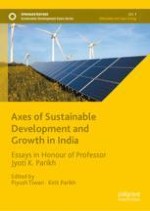2023 | OriginalPaper | Chapter
14. Human Development of India: Why Does It Always Look Challenged?
Author : Bibhas Saha
Published in: Axes of Sustainable Development and Growth in India
Publisher: Springer Nature Singapore
Activate our intelligent search to find suitable subject content or patents.
Select sections of text to find matching patents with Artificial Intelligence. powered by
Select sections of text to find additional relevant content using AI-assisted search. powered by
